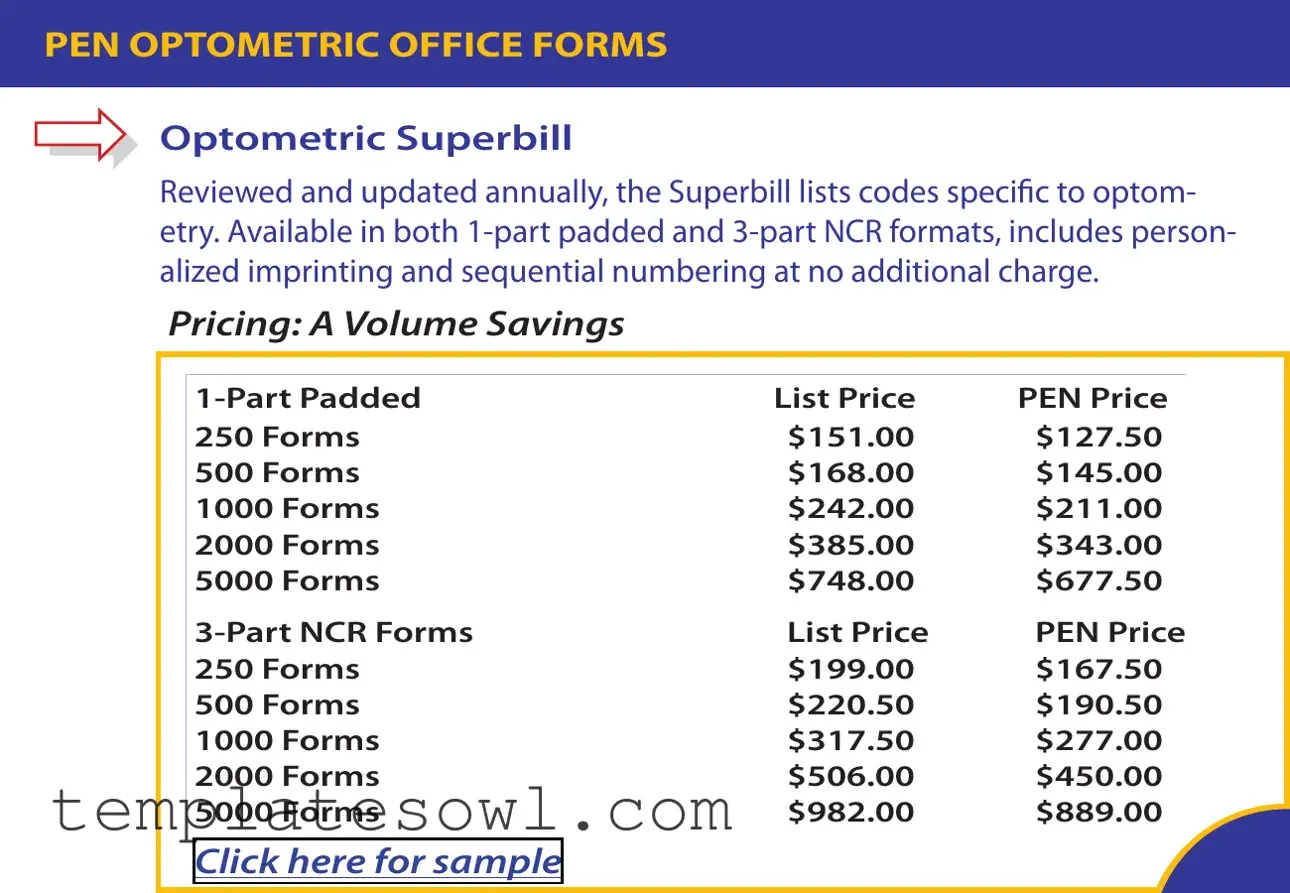What is the Optometry Superbill form?
The Optometry Superbill is a document used by optometrists to summarize the services rendered during a patient visit. It includes specific codes related to optometry, allowing for efficient billing and insurance processing.
How often is the Optometry Superbill updated?
The Superbill is reviewed and updated annually. This ensures that the codes remain current and relevant to the practice of optometry, accommodating any changes in industry standards.
What formats are available for the Optometry Superbill?
The Superbill is available in both 1-part padded and 3-part NCR formats. This flexibility allows optometry practices to choose the format that best fits their operational needs.
Is there an option for personalized imprinting on the Superbill?
Yes, personalized imprinting is available at no additional charge. This feature allows practices to customize the Superbill with their name or logo, creating a professional appearance.
What is the pricing structure for the Optometry Superbill?
The pricing varies based on the quantity ordered. For 1-part padded forms, prices range from $127.50 for 250 forms to $677.50 for 5000 forms. For 3-part NCR forms, the cost starts at $167.50 for 250 forms and goes up to $889.00 for 5000 forms. Discounts apply for larger orders, making it cost-effective for practices.
Are sequential numbering options available for the Superbill?
Yes, the Superbill includes sequential numbering at no extra cost. This feature aids in organization and tracking, simplifying administrative processes for the optometry practice.
Can I view a sample of the Optometry Superbill before purchasing?
A sample of the Superbill is available for review. Accessing the sample can provide insight into the layout and content, helping you make an informed decision before placing an order.
Why should my practice use the Optometry Superbill?
Utilizing the Optometry Superbill can streamline billing processes and improve accuracy in insurance claims. Its tailored content specific to optometry enhances efficiency, allowing practitioners to focus on patient care rather than administrative tasks.

